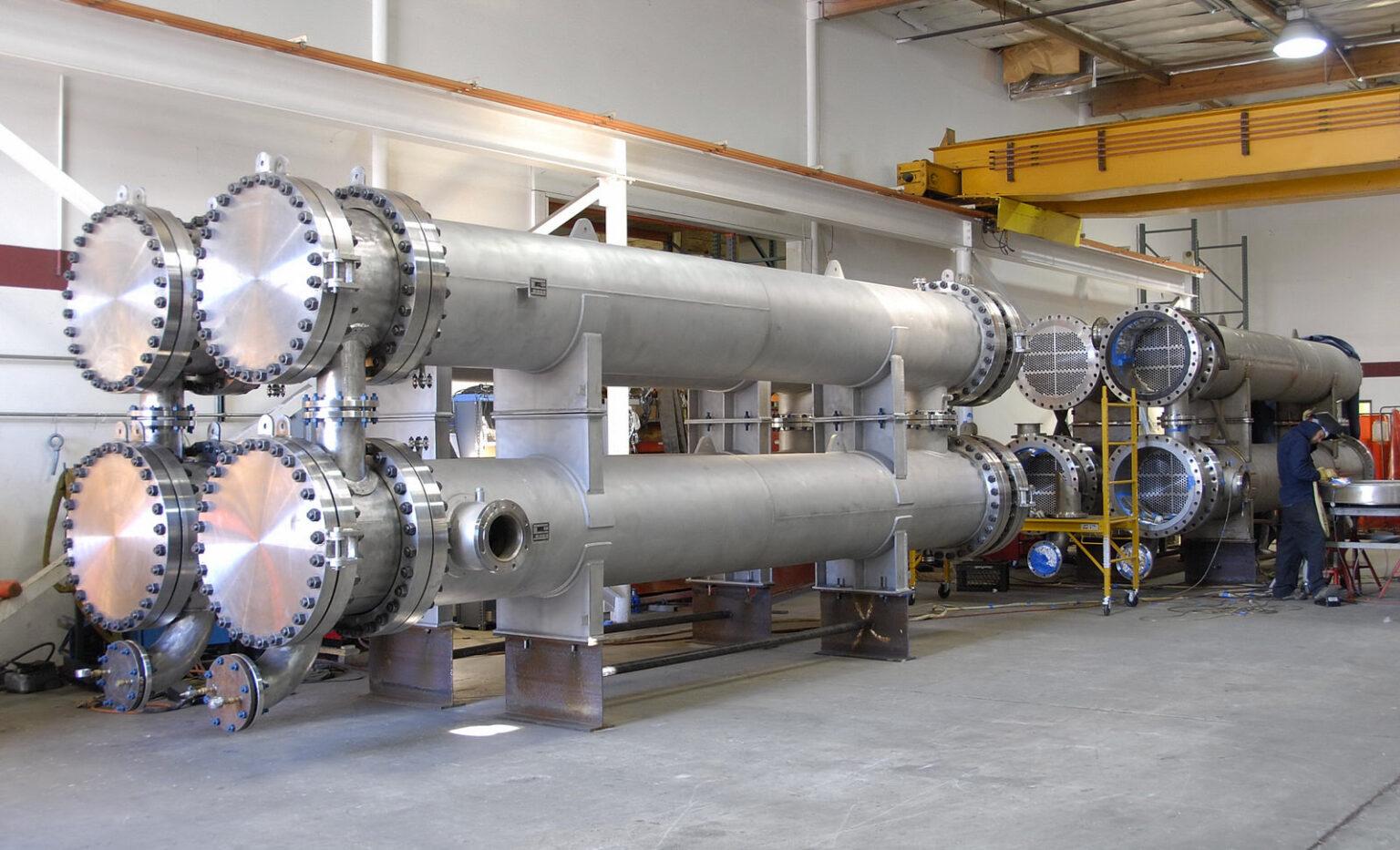The heat exchanger market involves the manufacturing of equipment used for heat transfer between two or more fluids (liquid or gas) at different temperatures. Heat exchangers are commonly used in space heating, air conditioning, refrigeration, power plants, and industrial processes. They play a crucial role in enabling efficient cooling or heating in numerous applications by transferring heat from one fluid to another without direct contact. Key types of heat exchangers include shell & tube exchangers, plate & frame heat exchangers, air cooled exchangers, car radiators, and cooling towers. The advantages of heat exchangers include compact designs for space optimization, durable construction allowing robust operation over long lifecycles, and high efficiency meeting strict energy standards. The rising demand for energy efficiency and emission reduction across industrial sectors has propelled the need for sophisticated heat transfer equipment in recent years.
The Global Heat Exchanger Market is estimated to be valued at US$ 21714.26 Bn in 2024 and is expected to exhibit a CAGR of 22.% over the forecast period 2024 to 2031.
Key Takeaways
Key players operating in the heat exchanger market are Bytedance, Amazon.com Inc., Meta Platforms Inc., Alphabet Inc., Spotify AB, Netflix Inc., Snap Inc., Twitter Inc., Pinterest, Etsy, Shopify, Patreon, OnlyFans, Teespring, Twitch Interactive, Discord, Cameo, TikTok, YouTube, and Instagram. These leading manufacturers have established widespread production facilities and sales networks to cater to the rising global demand.
The growing demand in power generation, petrochemical, oil & gas, HVACR, and other process industries is a major factor driving the heat exchanger market. Rapid industrialization and increasing energy consumption in developing nations have significantly contributed to market growth.
Encouraging policies and regulations mandating energy efficiency are also facilitating the global expansion of the heat exchanger industry. Leading manufacturers are actively increasing their international footprint through strategic acquisitions and partnerships to tap emerging opportunities across Asia Pacific, Latin America, Middle East, and Africa.
Market drivers
The rising emphasis on reducing carbon emissions and achieving sustainability targets in industrial operations is a key driver for the heat exchanger market. Strict environmental norms have compelled process plants and utilities to retrofit existing systems with advanced heat recovery equipment. Additionally, the growing demand for renewable power generation from solar and wind sources is also propelling the need for innovative heat exchangers in thermal energy storage applications.
The current geopolitical conflicts are negatively impacting the growth of the heat exchanger market. Disruptions in manufacturing and supply chain due to rising geopolitical tensions have hampered the production of heat exchangers. Increased economic sanctions have also restricted the import and export of crucial materials required for heat exchanger development between countries. Furthermore, diverting resources towards military and defense budgets amid the ongoing geopolitical issues have reduced investments in industrial infrastructure and manufacturing which is majorly hindering the expansion of the heat exchanger industry. However, newer strategic agreements for domestic production through joint ventures and technological collaborations can help nations gain self-reliance and sustain their industrial growth even during heightened political instability globally. The key manufacturers must enhance local sourcing, adapt flexible manufacturing practices, and develop alternate supply networks to minimize disruptions arising from changing geopolitical scenarios.
North America dominates the heat exchanger market size in terms of value due to high demand from major industries like power generation, HVAC, chemical processing etc. Supported by growing infrastructure spending and industrial investments, the Asia Pacific region is expected to witness the fastest growth during the forecast period driven by rapidly developing economies of China and India. Europe holds the second largest market share owing to stringent environmental regulations favoring energy-efficient systems across industries. On the other hand, Middle East & Africa is anticipated to offer lucrative opportunities for heat exchanger suppliers with increasing investments in large-scale petrochemical projects and rising district cooling demands in the Gulf countries.
Sponsored
The Growing Global Heat Exchanger Market Driven By Rising Demand For Energy Efficiency
Posted 2024-02-22 07:08:35
0
48

Search
Sponsored
Categories
- Art
- Causes
- Crafts
- Dance
- Drinks
- Film
- Fitness
- Food
- Games
- Gardening
- Health
- Home
- Literature
- Music
- Networking
- Other
- Party
- Religion
- Shopping
- Sports
- Theater
- Wellness
Read More
https://www.facebook.com/6PackKetoGummiesReviews/
6 Pack Keto Gummies:- 6 Pack Keto Gummies is simplest presented on its important net web site to...
These posters may explore various art form
Educational posters are visual aids designed to convey information, concepts, or knowledge in a...
HACCP Certification in Maldives
HACCP Certification in Maldives assists in management framework that ensures food safety by...
Lifewave Glutathione Patch
Lifewave X39 Glutathione Patch, Stem Cell Patches, Elevate your health with Lifewave's innovative...
anus4d
ANUS4D merupakan situs tebak angka terbaru yang memiliki platform atau aplikasi yang memudahkan...
Sponsored